Tire size can be confusing. Some numbers on the sidewall are listed in millimeters while others are inches. Plus, the right size for your car, truck, or trailer can differ depending on where and how you drive.
You can see your original equipment tire size in your owner’s manual or on the placard generally located on the driver’s side door jam. This is the sizing recommended by the vehicle manufacturer.
If you’re interested in switching out your tires for a different look or performance, a good place to start is the numbers and other indicators on your existing tires’ sidewall. Next, have a tire professional help you determine a tire size range that will fit your vehicle and driving needs.
Here’s what those numbers and indicators on the sidewall indicate and how to understand them:
A: TIRE TYPE The first letter in the code tells you what class of tire it is.
P stands for passenger vehicle tire. P-class tires include cars, SUVs, crossovers, minivans and smaller pickup trucks.
LT means light truck tire, designed for vehicles that are capable of carrying heavy loads, towing trailers, or for those looking for an extra heavy duty option. These are often equipped on three-quarter or 1 ton trucks and SUVs.
ST stands for Special Trailer. These tire sizes are meant for trailers, including fifth wheels and other travel trailers, as well as boat and utility trailers.
If there’s no letter before the first number, you have a metric tire most commonly referred to as European size. It’s also measured in millimeters but may have a different load capacity than a P or LT tire.
B: TIRE WIDTH The three-digit number following the letter is the tire’s width (from side to side, looking at the tire head on) in millimeters. This may also be referred to as the section width.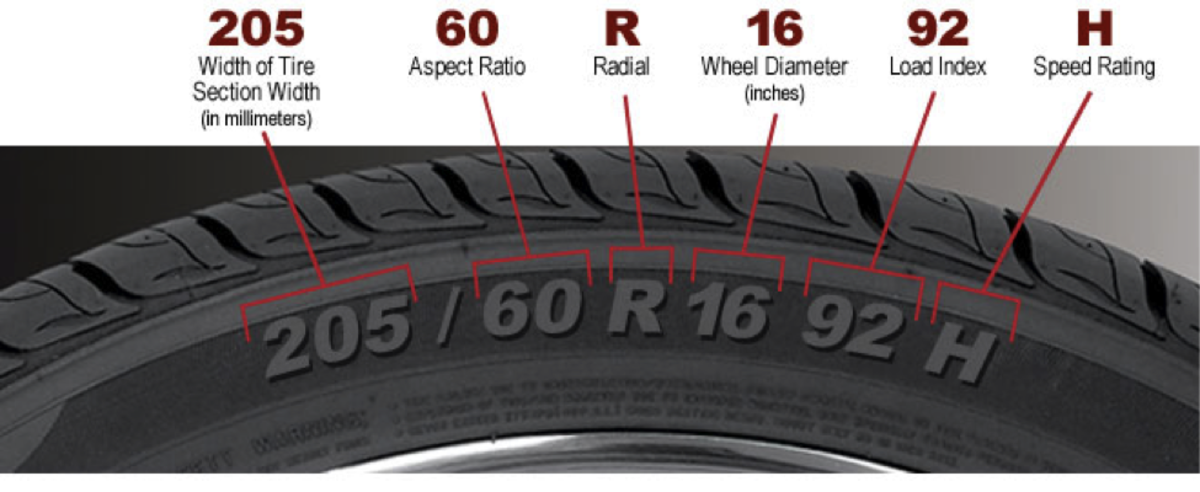
C: ASPECT RATIO The forward slash separates the tire width number from the two-digit aspect ratio. The bigger the aspect ratio, the higher/taller the tire’s sidewall, or “profile” as it’s sometimes called.
The aspect ratio is indicated on the tire sidewall as a percentage. It’s the height of the sidewall measured from wheel rim to top of the tread, expressed as a percentage of tire width.
In this example, the aspect ratio is 65, meaning the sidewall is 65 percent as high as the tire is wide. To get the sidewall height, take the tire width of 215 mm and convert it to inches (8.46). Then multiply this by 65% (.65). This gives you an answer of 5.5, the sidewall height in inches.
D: CONSTRUCTION TYPE This single letter tells you about the internal construction of the tire.
R is for radial tires, the industry standard for most tires today. They have better road grip, lower rolling resistance for better gas mileage, ride comfort and durability than previous generations of tires.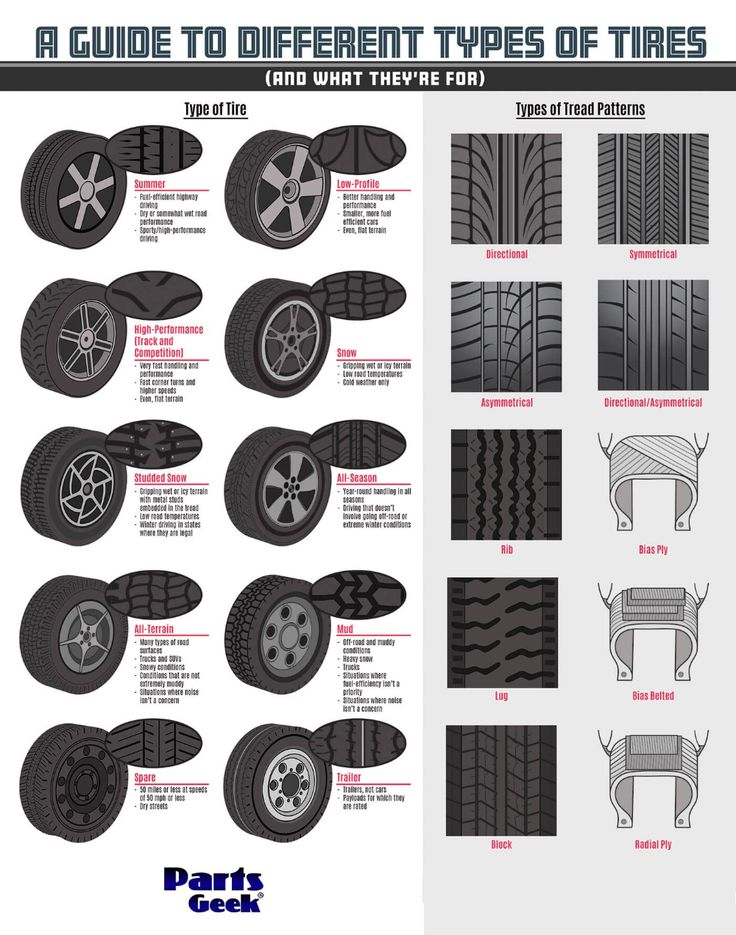 In a radial tire, the plies — layers of strong cords made of a blend of polyester, steel and fabric and coated with rubber — are laid perpendicular to the direction of travel.
In a radial tire, the plies — layers of strong cords made of a blend of polyester, steel and fabric and coated with rubber — are laid perpendicular to the direction of travel.
D is for tires built with diagonal (crisscrossed) plies, called bias-constructed tires. They are also called conventional, x-ply, or cross-ply tires. Some motorcycle and trailer tires still use this internal construction.
Some run-flat tires are identified with an F followed by the type of internal construction.
E: WHEEL DIAMETER This two-digit number specifies wheel diameter in inches. It’s the distance between the two bead seat areas (where a tire gets tightly sealed onto the wheel).
F: LOAD INDEX The two-digit or three-digit number that follows the gap specifies tire load index. The load index symbol indicates how much weight a tire can support, based on the following standard chart. In our example, the load index is 89, which indicates the tire has a load capacity of 1,279 pounds, when inflated to the tire’s maximum air pressure rating.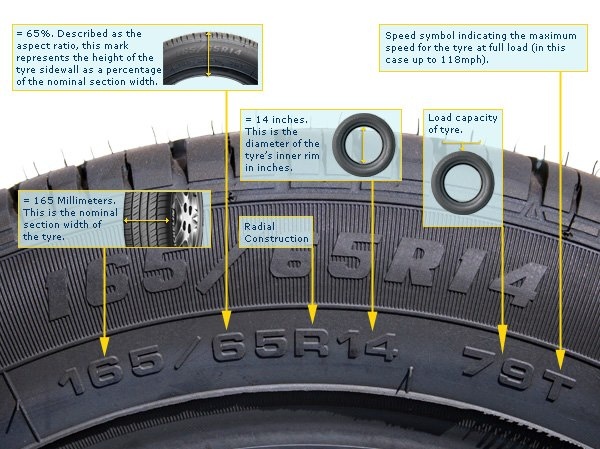
G: SPEED RATING The last letter is the tire speed rating. This indicates the top speed it’s safe to travel at for a sustained amount of time. A tire with a higher speed rating can handle heat better and provide more control at faster speeds. The maximum operating speed of a vehicle is no more than the lowest speed rating of all tires mounted on the vehicle. (Of course, you should always abide by speed limits for safer driving.) Speed rating is usually, but not always, a single letter (see the chart).
Below you will find several charts that will help you understand tire sizing numbers, including a load index chart and speed rating chart.
A tire size calculator is a quick way to see whether the tire size you’re considering will likely fit your car, SUV, sports car, light truck or crossover.
But remember that is only an estimate. It’s important to stay within the sizing tolerances of your vehicle.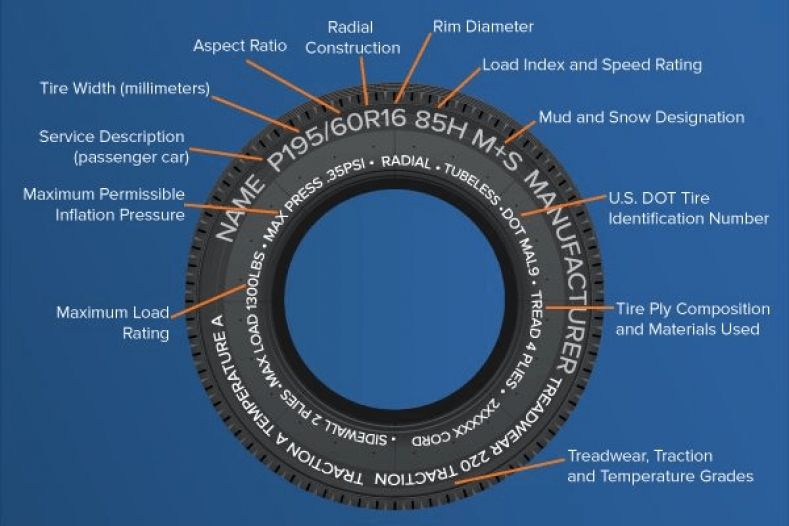 Tires that are the wrong size could cause some pull in the steering wheel, rub against the suspension or body of your vehicle, reduce clearance on hills, or result in a stiffer or noisier ride.
Tires that are the wrong size could cause some pull in the steering wheel, rub against the suspension or body of your vehicle, reduce clearance on hills, or result in a stiffer or noisier ride.
If you’re considering mounting a different tire size on your vehicle, check with a tire expert. Find out whether the tires and wheels you have your eye on are the right fit for your vehicle’s suspension, gearing, and bodywork. And ask how any differences in revolutions per mile, tire speed, load index, and speed rating will affect your ride quality and vehicle performance.
See how new tires and rims will look on your car or truck using our Virtual Wheels simulator, available at any Les Schwab.
Find Your Store
One of the first things we need to learn about tires is how to read a tire sidewall. Without knowing how tires are measured, we cannot even start explaining the complicated relationship consumers have with different tire models.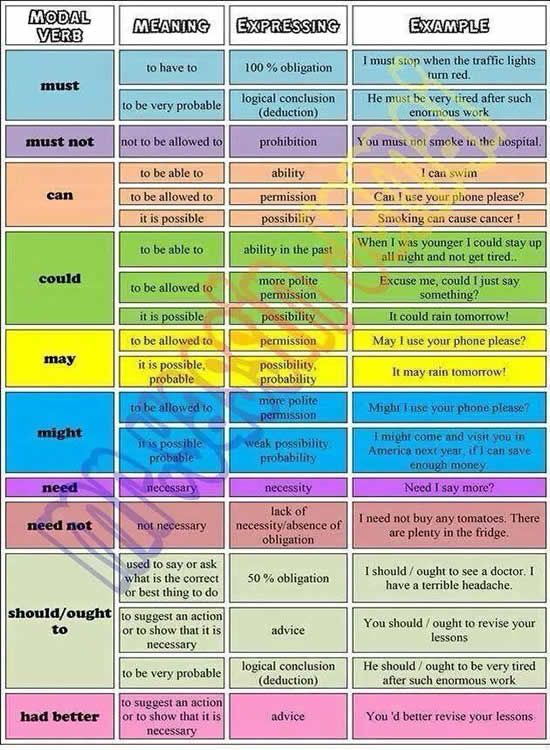
Tire reading is not a complicated science. The only problem that can arise is this: consumers do not know what they should get for their vehicles. However, everything you possibly need to know about a tire is mentioned on its sidewall.
Needless to say, different tire sizes will offer various numbers, letters, and sometimes even symbols that we have to decipher. How can we go about doing this? What are the numbers on a tire? Do you know how to read tires correctly?
Check out this picture to see every tire code and symbol:
Of course, we will go into more detail for each and every one of these markings.
Arguably, the most crucial thing is tire sizing. But, how to read tire size on the sidewall is not that complicated. Tires for passenger cars, SUVs, and most light trucks have the same distinction of tire dimensions. Explained below is the tire size breakdown, or in other words: what do the numbers on tires mean?
The first number on tire size is the tire’s width.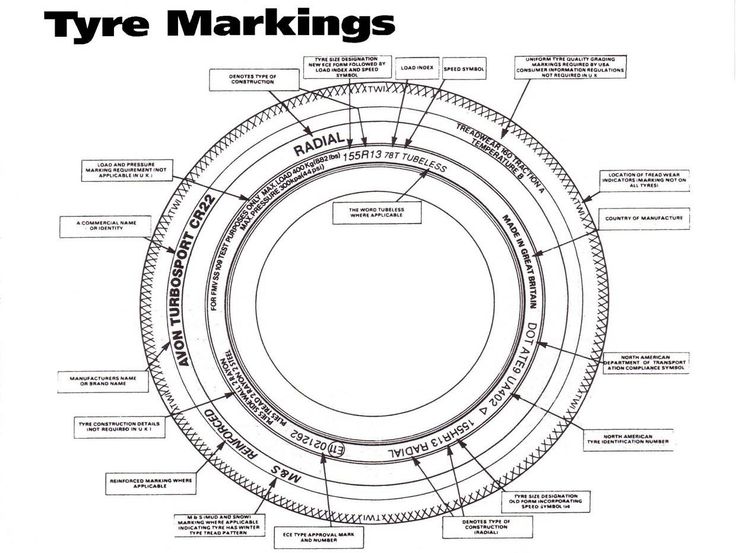 It is a three-digit number representing the footprint width in millimeters from one shoulder to the other. In other words, it is the width of the tire’s road contact patch, which also determines the rim width necessary.
It is a three-digit number representing the footprint width in millimeters from one shoulder to the other. In other words, it is the width of the tire’s road contact patch, which also determines the rim width necessary.
The second of the tire numbers indicates the tire’s sidewall height. This is where tire specification becomes a bit complicated. The tire’s aspect ratio, the second number, is not a straightforward measurement. Instead, it is the sidewall’s height from the rim to the tread, conveyed as a percentage of the tire’s width.
The size of tires is not complete without the rim diameter. This is the third or last number of the size, explained as the distance measured between the parallel bead seats of a wheel. Yet, it is still important for tires, as this number shows what rim size the tire can be mounted on.
Reading tire size is not complete without knowing about the letters on the sidewall and their meaning. If you know how to find car tire size on the sidewall, you have surely seen that it is an alphanumerical construction.
If you know how to find car tire size on the sidewall, you have surely seen that it is an alphanumerical construction.
Apart from the numbers on the sidewall, specific letters also need to be taken into consideration when talking about understanding tire sizes. Let’s see what other marvels the tire’s sidewall contains.
Have you ever wondered: “What does the R mean in tire size?” Well, it indicates the tire’s construction type, along with other symbols. What’s in their structure greatly affects the tire type. The placement of the structure’s belts will change the tire’s performance and durability.
Tires with a radial construction will have the letter R in their tire size after the aspect ratio. Radial tires feature plies that were placed radially from one to the other sidewall.
This tire type is most common on modern roads, for a reason. Radial ply placement optimizes the tires for everyday use, as it minimizes the possibility of heat build-up.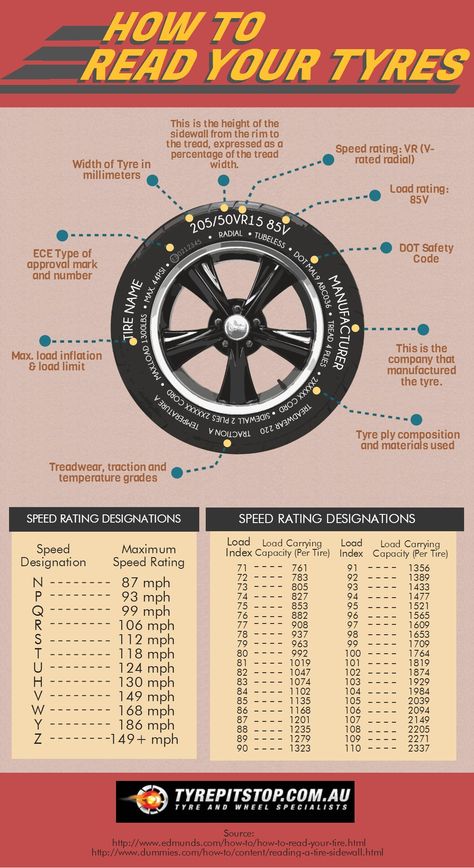
Diagonal tires, on the other hand, feature the letter D before the wheel diameter. Tires with this construction are made with nylon cord casing layers that are placed diagonally (at 55 degrees) in the tread and sidewall.
Often, diagonal models belong to the trailer category. However, other tire types are also manufactured with this construction. Passenger car and SUV tires are not available with diagonal constructions, as the primary function of these tires is their load durability.
Technically, bias-ply tires are not marked with a letter. Yet, we need to mention them.
Tires with this construction type simply have a hyphen (-) between the aspect ratio and rim measurements. This indicates that the tire’s internal ply cords are diagonally placed, overlapping each other. They are angled at 30-40 degrees in order to reinforce the tire’s durability.
Apart from the tire size, there are other tire measurements we need to consider when learning how to read tire codes.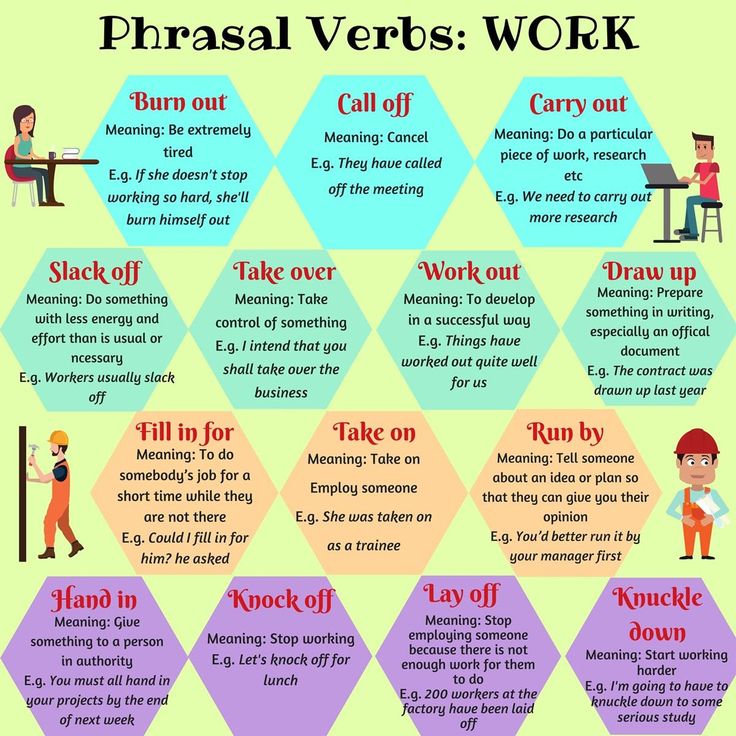 One of them is the UTQG rating which shows the tire’s treadwear, traction, and temperature performance.
One of them is the UTQG rating which shows the tire’s treadwear, traction, and temperature performance.
This mark is a combination of numbers and letters.
The first one, the treadwear grade, provides a better look into the expected tread life of the specific tire model. For example, if the number of 600, the tire’s excepted tread life is 60,000 miles. Just keep in mind that external factors can influence this.
The traction rating can be marked with AA, A, B, and C. This represents the tire’s ability to stop on wet road surfaces. The better this rating is (with AA being the best), the shorter its stopping distance will be. Purchasing tires with better traction ratings is always a good idea.
Lastly, let’s talk about the temperature grade which indicated the tire’s heat durability. During the vehicle’s performance, heat build-up on the tires is normal. However, various tires will handle this heat differently. This rating ranges between A, B, and C, showing how well the tires withstand heat.
This rating ranges between A, B, and C, showing how well the tires withstand heat.
Tire makers calculate the weather durability of their possible models even before the products are manufactured. Therefore, tires are only made if they are able to handle the conditions they were intended for. As a result, all season and winter tires have their own specific markings, which note their performance in such weather conditions.
Tires that feature M+S on their sidewall are all season models. This indicates its performance in mud and snow, basically rainy and snowy conditions. On the other hand, winter tires hold the 3PMS (three-peak mountain and snowflake) symbol, indicating the tire’s secure application in freezing and icy situations.
The next part you need to know about is the tire’s load index and speed rating. These are numbers and letters that are found after the tire size. Therefore, if you know how to find the size of your tire, you will be able to easily locate speed ratings and load index as well..jpg)
But, what exactly do speed rating and load index mean?
The first one is the load index, which determines how much weight one tire can handle. The load index number corresponds to specific lbs the tire withstands while still offering secure performance. Keep in mind that versatile tire types will require different load capacity levels to ensure their safe driving experience.
After the load index, you will see a letter. This is the letter that indicates the tire’s maximum speed capability. The speed rating letter corresponds to the specific miles/hour (mph) the tire can safely withstand. Be sure to purchase a tire set that can handle the vehicle’s speed capability.
In a perfect world, every tire type would be on one cohesive tire size chart and manufacturers would just go up and down in numbers to indicate sizes. Sadly, we do not live in that reality.
In our world, there are different ways various tires are marked.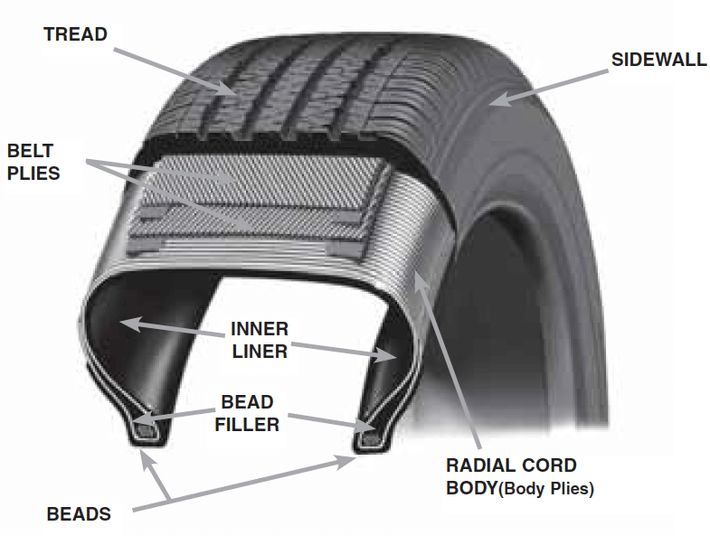 How to read the numbers on a tire will have versatile answers depending on what tire type you need to purchase.
How to read the numbers on a tire will have versatile answers depending on what tire type you need to purchase.
Let’s take a look at some of the main tire sizes available on the market.
P-metric tire sizes are manufactured for passenger cars and SUVs. They consist of three sets of numbers and two letters.
P-metric comes from the first letters (P) that indicate its passenger vehicle applications. Then come the tire width, aspect ratio, construction type, and rim diameter.
Euro-metric tires are similar, however, they are missing the P at the beginning.
A Euro-metric tire with a commercial indication is similar to a P-metric tire. They are available in smaller sizes, but they are reinforced for better load durability. The only difference is that they are manufactured for commercial applications.
Tire brands will place the letter C at the end of the size, portraying this. Commercial tires need specific load capacity in order to securely perform under larger loads.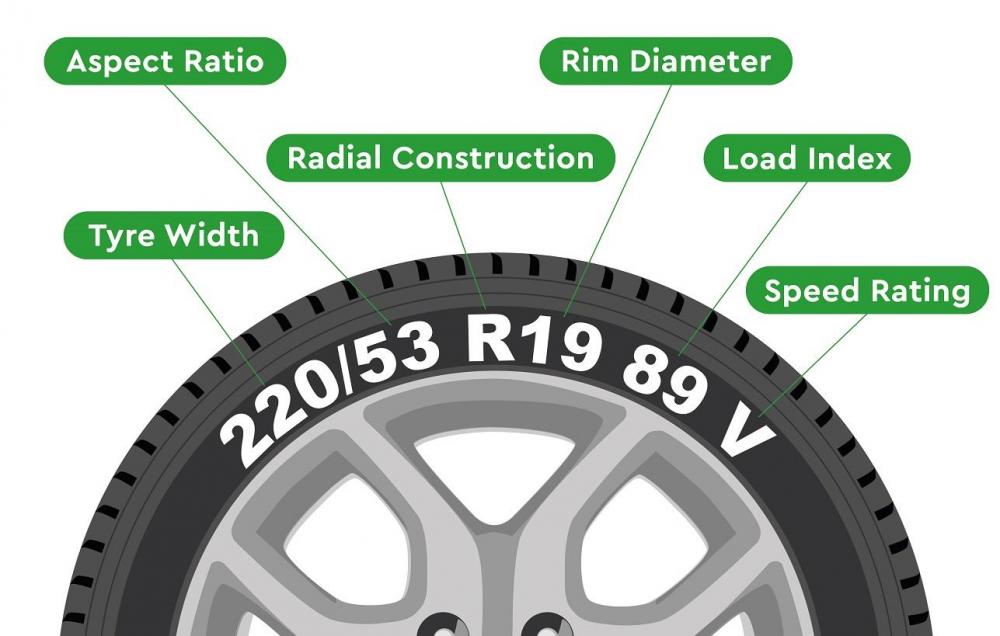
Bigger vehicles need larger tires, which provide better durability. This is where LT-metric tires come into play. Light truck tire sizes are similar to P-metric tires, there is just one big difference.
Instead of the letter P, you will see two letters: LT. This literally means the tire is made for light trucks. After this, you will see the rest of a normal tire size, with their measurements.
Another difference is that light truck tires feature two load indexes. The first one shows how much weight one tire can handle when two tires are mounted on an axle, while the second one shows the weight durability of a tire if four tires are mounted on one axle.
Temporary spare tires are smaller than regular tires. They are usually manufactured with smaller physical sizes in order to save on trunk space. However, these tires do not perform as well as normal passenger car tires do.
So, what is a temporary spare tire size? Well, the first letter is T, indicating its temporary status. Then come the width, aspect ratio, construction, and wheel size.
Then come the width, aspect ratio, construction, and wheel size.
We are still not at the end of our tire guide. There are still a few things we need to go through.
The tire date coding, or DOT, shows when the tire was mounted. While the DOT number is a longer number, which provides more information about the tire, its date code portion is the important one.
This is a four-digit number that tells us the week and year of when the tire was manufactured. For example, if the tire’s sidewall states 1020, that means the tire was in production on the 10th week of 2020.
While tires no longer actually feature the number of plies their sidewalls state, the ply rating is still a crucial measurement. Therefore, how to tell ply on tires is our next section.
The ply rating and load range are marked on the tire’s sidewall. They indicate the load durability of light truck tires. The ply rating shows the ply durability of the tire, in order words, how strong these tires are.
The ply rating shows the ply durability of the tire, in order words, how strong these tires are.
The ply rating is marked with a number, counted in even numbers starting from 10 (for truck tires, passenger tires are rated 4-ply). On the other hand, the load range is shown with letters, starting from A and going up.
Tire air pressure is important. Not only will proper air pressure levels ensure the tire’s secure performance, but they also secure the tire’s load durability.
Keeping tires at the correct air pressure levels is crucial. But, to do that, you need to know the correct PSI levels the tires need. Luckily for us, this is also marked on the tire’s sidewall under “Max Pressure”.
Above this, “Max Load” indicates the tire’s load durability one more time.
There are different letters available on the tire sidewall. However, the most important letters are part of the tire size. The first one shows whether the tire is P-metric (P) or a light truck size (LT). R or D show the tire’s internal structure, as they stand for radial or diagonal.
The first one shows whether the tire is P-metric (P) or a light truck size (LT). R or D show the tire’s internal structure, as they stand for radial or diagonal.
The three-digit number is the first number of the standard tire size sequence. This part of the tire size indicates the tire width of P-metric sizes. This shows the exact width of the footprint from shoulder to shoulder in millimeters.
With LT-metric tires, you will see a load range stamped on the tire sidewall. Next to this, the tire will state the ply rating of any given light truck tire. However, with P-metric sizes, you will not see this. These tires will only show whether the tire is Extra Load (XL) or Light Load (LL).
Photo: Shutterstock
adv.rbc.ru
See also
Numbers and letters on a car tire provide all the necessary information about it. True, it is not easy to read them - here, even in the designation of one parameter, several measurement systems can be used simultaneously. In addition, many values are expressed in special indices. We decipher all important labels for the buyer.
True, it is not easy to read them - here, even in the designation of one parameter, several measurement systems can be used simultaneously. In addition, many values are expressed in special indices. We decipher all important labels for the buyer.
adv.rbc.ru
A tire label is information about its properties printed on the outer rim. This is a huge amount of useful information. Here are the parameters of the tire that can be read from it itself:
The size designation is written in the form XXX/XX R XX. For example 225/65 R17.
For example 225/65 R17.
The first three digits are the tire width in millimetres. In our case - 225 mm.
The second digit is the height, but not in millimeters, but as a percentage of the width. In our case, its height is 146.25 mm (225 * 0.65).
The third number after R is the outside diameter of the wheel or the inside diameter of the tire in inches. In our case, this is 17 inches or 43.18 cm. Do not confuse - this is the radius, not the diameter. The letter R itself stands for the radial design of the tire, which confuses many. Sometimes Radial can be written separately on the bus - the meaning is the same. In addition to the radial, there is also a diagonal design (D), but these are not found today.
Two numbers and a letter immediately follow the size. These are the codes for the load capacity and speed limit of the tire.
Two digits - capacity or load index. This is a complex system of values, in which the larger the number, the greater the load, but the step size between the values is not constant. Therefore, it is easier to just know the most common of them:
Therefore, it is easier to just know the most common of them:
The index value is the load on each wheel separately. To calculate the total load capacity, multiply by 4. This value can also be written elsewhere in a simpler form: Max load - xxx kg.
This value can also be written elsewhere in a simpler form: Max load - xxx kg.
Photo: Shutterstock
The letter after the two digits of the load index is the index of the maximum speed for which the tire is designed. It starts with A, but the values relevant for modern machines start with the second half of the Latin alphabet:
This is not the limit, but the maximum "comfortable" value. In exceptional cases, you can even exceed it by 20-30%, but it is better to avoid this.
Another key parameter is the timing of the tire. Usually it is indicated in a rounded rectangle, but may be without a frame. The first two digits are the week, and the second two are the year.
Usually it is indicated in a rounded rectangle, but may be without a frame. The first two digits are the week, and the second two are the year.
Also, three more parameters are usually indicated on the tire - wear resistance margin, grip quality class and temperature index.
The wear index is denoted by the word treadwear. Its unit is 480 km. Multiply the number next to that word by that value. If treadwear is 400, it means that under test conditions at the test site, such a tire has worn out after driving 192,000 km. Also, this parameter can be designated separately as the abbreviation TWI.
Traction is a measure of how well a tire grips on wet road surfaces. It has values from AA - the best level, to CC - the worst. Tires for regular passenger cars usually have class A, and the highest class is for sports and racing.
Temperature is the tire's ability to withstand heat when driving at a certain speed. There are three values here:
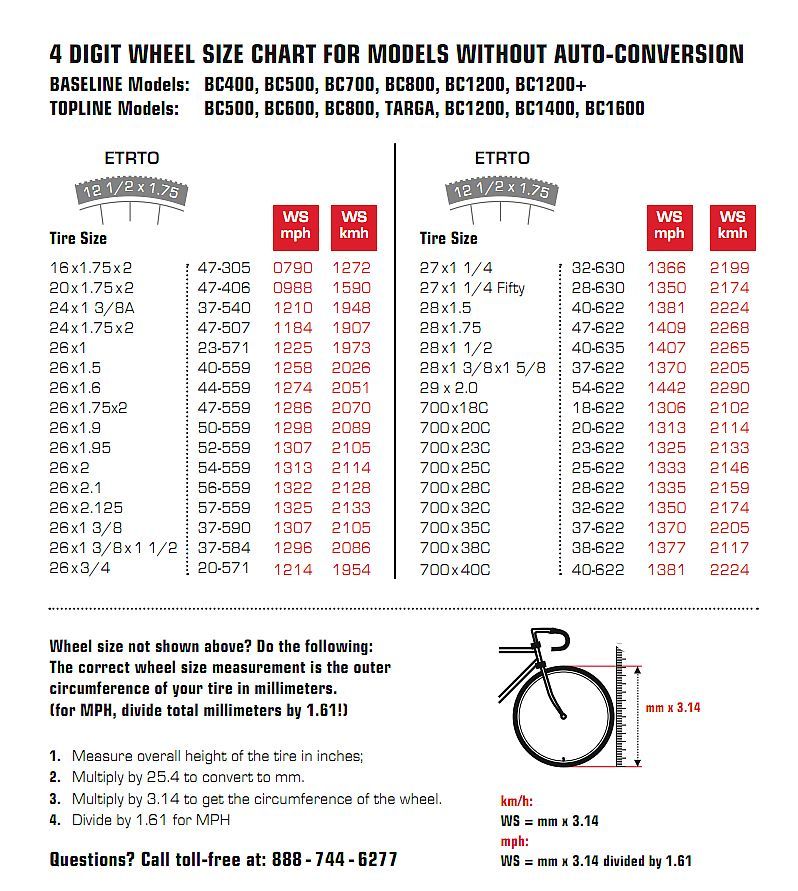
Tires of modern passenger cars most often have this index value - A.
Photo: Shutterstock
The letter E with a number indicates that the tire complies with the rules of the European Tire Standards Association (ETRTO) and has a corresponding certificate . The number indicates the country that issued it - but this does not matter, since the ETRTO requirements are the same. In this case, the tire can be produced anywhere.
The weather conditions in which it is permissible to use this tire are also usually indicated:
Winter tires must have a first, second or third designation.
On some tires you can find the designation of the type of car for which they are intended:
In addition, the tire may be marked with:
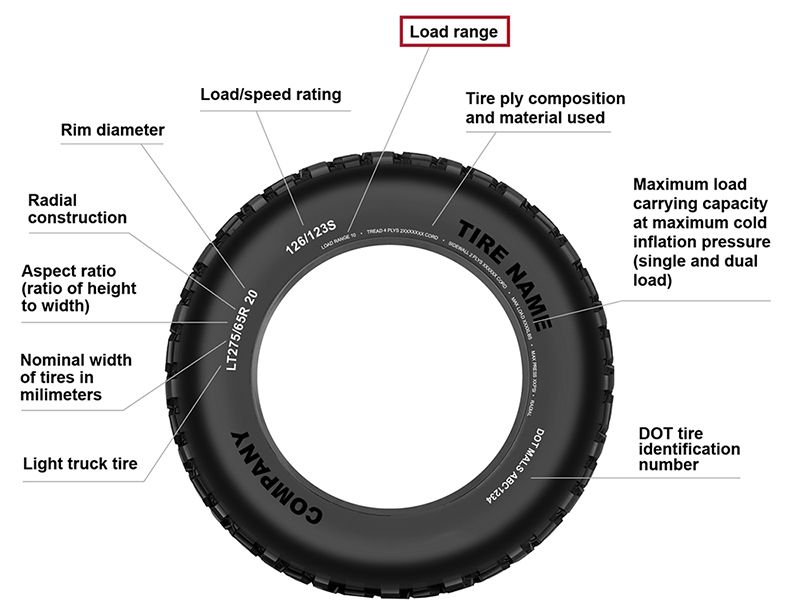 This information is of no use to the consumer;
This information is of no use to the consumer; Save article:
In this article:
Are you looking for a set of summer or winter tires for your car but don't understand all those numbers and letters? This problem is easily solved. In this article, we will show you how to easily and quickly understand what the numbers on the tires mean, what parameters are hidden behind them, and which tires are suitable for your car.
Only then the car will confidently stay on the road when it is shod with rubber with optimal technical characteristics corresponding to the weather, type of coverage and season.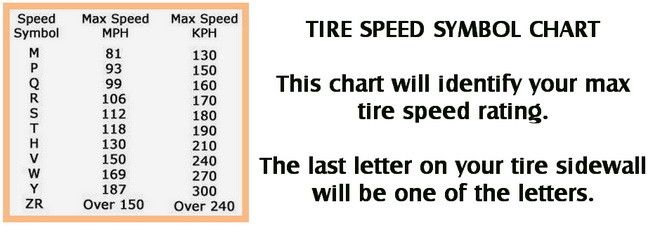
The marking of car tires consists of several meanings. For example, on any wheel, the manufacturer, brand of rubber, and tire size are indicated. The first three numbers on the wheel indicate the size of the rim (in inches, 1 inch equals 2.54 cm), how wide the tire is, and the height of the profile. This marking can be seen if you look at the wheel from the outside.
Photo: Shutterstock
Let's analyze what the numbers on the tires mean on a specific example of a wheel marked 195 60 R16. The first digit of 195 mm is the tread width. What does the second number on a tire label mean? It shows the relationship between tread height and tire width. The wheel will cling to the coating perfectly if the value of this index is high. Most often, drivers call this parameter the height of the profile.
The last number is the inner diameter of the tire (in inches). Many car owners make the following mistake: they buy tires without taking into account the fact that external parameters change.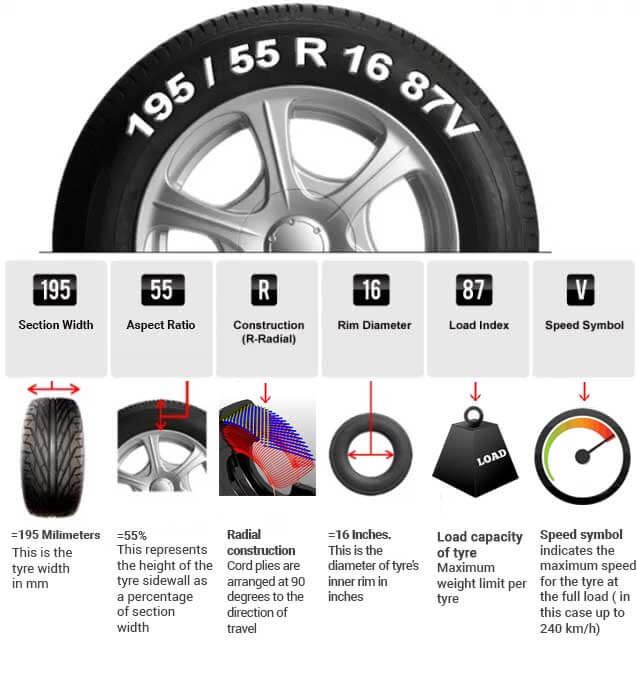
So, the height of two wheels marked 185 65 R15 and 210 65 R15 will be different, but the landing diameter is the same. Due to small differences in the profile height and tire width in this example, it will not be possible to mount tires on a car. This should not be forgotten when buying a set of wheels. You can use the tire calculator to find the right tire size for you.
In addition, one more parameter is applied to any wheel, this is the permissible speed. It is located after the numbers on the tires indicating the tire size. This index indicates what maximum speed the tire is designed for.
Helpful materials on finance and shopping
Download compilation
What do the numbers on the tires after the speed index mean? Usually there is an indication of the permissible load on one tire.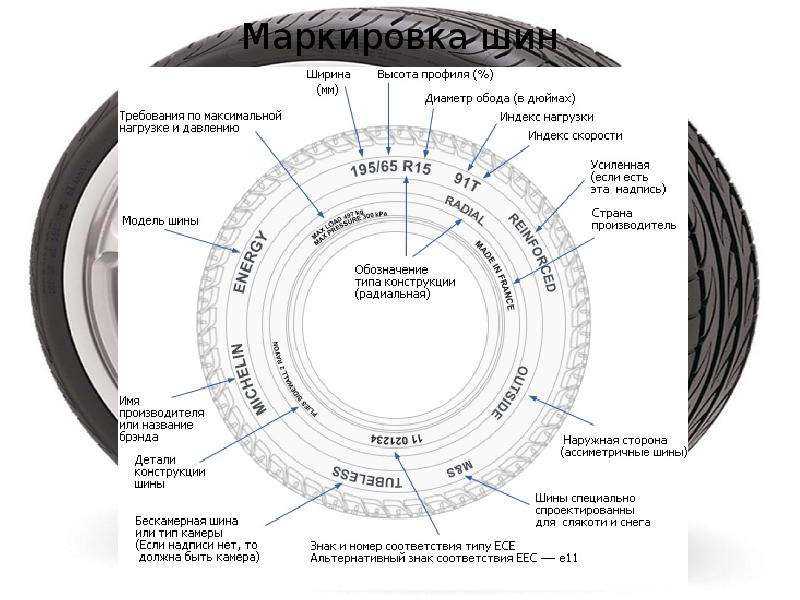 For example, it may look like this: "88T". This figure means that when driving at the maximum possible speed of 190 kilometers per hour, the load on one wheel should be no more than 560 kilograms.
For example, it may look like this: "88T". This figure means that when driving at the maximum possible speed of 190 kilometers per hour, the load on one wheel should be no more than 560 kilograms.
Photo: Shutterstock
To make it clearer what the numbers on the tires mean, consider the European marking of the Cordiant Sport 3 225/65 R17 106H tire model.
On American tires, you can find two different types of markings that differ from each other.
Consider the first marking: P 195/60 R 14 or LT 235/75 R15. As you can see, it practically does not differ from the European one. However, the size is preceded by the letter P on passenger tires or LT on tires for light trucks.
There is also a second marking, it looks different: 31x10.5 R15. In this case, the usual European marking would look like this: 265/75 R15. What do the numbers on tires with this marking mean (in inches):
What do the numbers on tires with this marking mean (in inches):
It is worth noting that if you do not pay attention to the units of measurement (inches, which are unusual for us), then the American marking will be clearer and more logical in comparison with the European one. Indeed, in the second case, the height of the rubber profile depends on the width of the wheel.
In the American labeling, everything is simpler. For clarity, consider what the first digit in tire size means. It shows the size, that is, the outer diameter. The second number indicates the width, the third - the inner diameter.
You can follow the current promotions on the Halva Installment Card, which will help you profitably purchase the goods you need, here.
How to find out the width of the tire in the usual units of measurement, that is, in mm? To do this, multiply the width in inches 10.5 by 25.4, because one inch equals 2.54 cm. The result is a value of 267 mm. Since there is no given size, we take into account the width of the tire 265, which is obtained after rounding.
The next step is to find out the height of the sidewall, which is measured as a percentage. To do this, perform the following steps: subtract the bore diameter from the outer diameter. Then we divide the resulting value by 2. The figure that we get, then needs to be divided by the width of the profile.
See also
"How to choose winter tires and not lose"
Read more
Thus, in our example, we have the following: ((31 - 15) : 2) : 10.5 = 0.76. The resulting value must be rounded up to 75.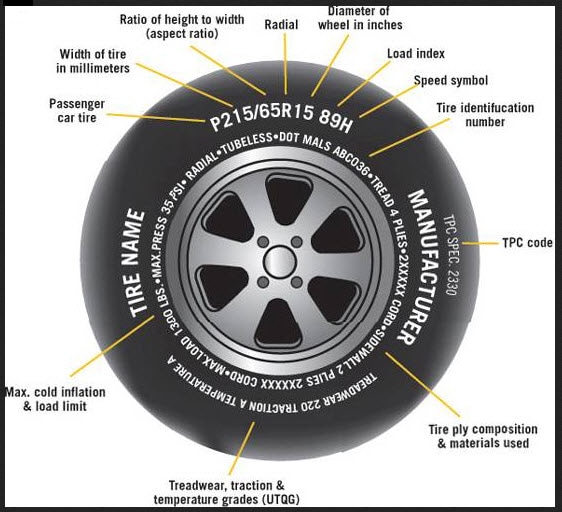 As a result, we will have the following markings on tires: 265/75 R15.
As a result, we will have the following markings on tires: 265/75 R15.
If the profile height is not indicated on the tire, do not forget that for passenger tires this figure is 80 - 82%, for trucks 88%.
To convert from metric to inch system, we need to perform calculations:
So, we figured out what the numbers on tires with the American marking mean 31 * 10. 5 R15
5 R15
Photo: Shutterstock
XL or Extra Load - this inscription on the wheels means that they are reinforced, that is, the load index is more than 3 units, compared to standard tires with the same size. Simply put, when you see a load index of 9 on rubber1, as well as the inscription XL, which means that this tire is designed for a load of not 615 kg, but 670. For clarity, it is recommended to study the load index plate.
M+S , M&S ("mud and snow") means that the tires are designed for winter (or all-weather). This marking can also be seen on summer wheels for SUVs. But in this case, rubber is not suitable for use in winter, since winter tires have a different composition, as well as a specific tread pattern. "M&S" means you have an off-road wheel in front of you.
All Season or AS, ("for all weather") - all-weather tires.
The snowflake badge indicates that the tires are designed for winter use. Don't see this marking on the side of the tire? So, you can ride on such tires only in the summer.
Popular articles
How to choose a subwoofer for your car
19.12.2022
1957
From top to bottom, obliquely: how to degrease a car body before painting
12/15/2022
2290
Chic, shine, beauty: how to remove scratches on a car with your own hands
9.12.2022
1674
Without damage: how to reduce the fuel consumption of your car
11/29/2022
1014
How much do they pay for advertising on a car
11/25/2022
4766
Aquatred, Aquacontact, Rain, Water, Aqua or the symbol "umbrella" - means that you have rain tires in front of you.
Outside and Inside the inscription indicates that these are asymmetrical tires. When installing them on the car, you should be extremely careful, because they have an outer and inner side. During installation, pay attention to the fact that the inscription "Outside" is located outside, "Inside" - from the inside.
RSC, RunFlat - on such rubber, even if a puncture occurs, you can continue driving at speeds up to 80 kilometers per hour. These tires allow you to drive a distance of 50 - 150 km after the pressure has completely dropped. Depending on the manufacturer, the marking may vary slightly, for example Bridgestone RFT, Continental SSR, Goodyear RunOnFlat, Nokian Run Flat, Michelin ZP.
Rotation or the arrow icon on the side of the tire means that you have a directional tire in front of you. When mounting it, you should take into account the direction of rotation of the wheel, which is indicated by the arrow.
Tubeless - tubeless wheel. If there is no such marking, the tire can only be used with a tube. The inscription Tube Type means that rubber can only be used with a camera.
Max Pressure is the highest allowable pressure in the wheel, Max Load is the maximum load capacity (kg) that the tire is designed for.
Reinforced, RF (for example, 195/70 R15RF) means that the tire is reinforced, it has 6 layers. When the letter C is at the end of the marking (for example, 195/70 R15C), which means that this rubber is cargo and it has 8 layers.
Radial – The inscription indicates that the tire has a radial construction. If there is the word "Steel", then the tire is reinforced with a metal cord.
Letter E, circled - rubber meets European ECE standards. The inscription DOT means that the tire meets the American quality standard.
Temperature (A, B or C) - shows how rubber is resistant to high temperatures when driving at maximum speed.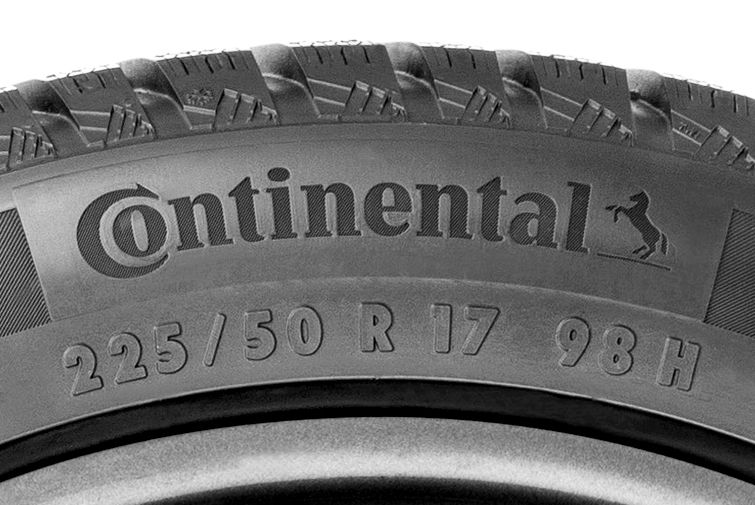 When the letter A is indicated, then the heat resistance is the best.
When the letter A is indicated, then the heat resistance is the best.
Traction (A, B, C) - indicates how well the tire will brake on wet roads.
Treadwear – The inscription indicates the relative mileage of the tire.
TWI (Tread Wear Indiration) - means tread wear indicator. Most often, next to this inscription is the sign "arrow". Characters distributed in 6 – 8 sections all over the wheel. They indicate the smallest tread depth at which the tire is allowed to operate. The wear indicator protrudes 1.6 mm. This is the minimum allowable tread height for passenger tires. The wear indicator is located in a recess in the tread, most often in the grooves to drain water.
Read also
"How to choose a battery for a car: criteria and mistakes"
Read more
DOT - manufacturer's address code, coded tire size, certificate, and the week and year the tire was manufactured.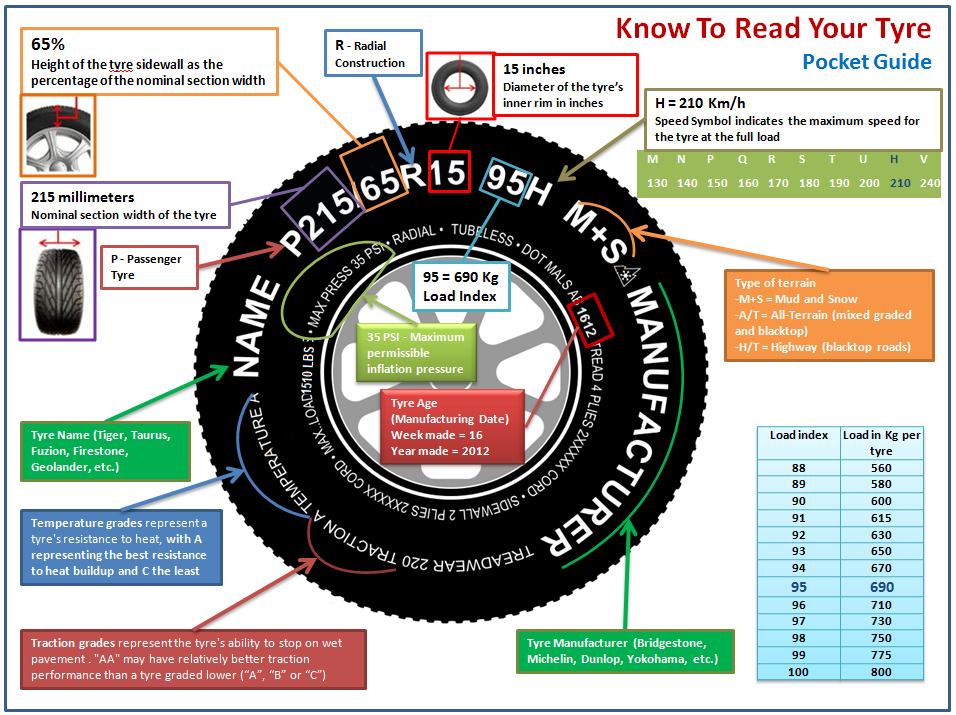
We have analyzed what the numbers mean on winter tires, as well as on summer and all-season tires. However, in addition to them, there is also a color marking, the meaning of which also needs to be known. Usually on tires you can see various symbols of four colors: red, yellow, white and blue.
Photo: Shutterstock
The most commonly used white label is . For example, you might see icons in a small circle. The white marking is applied by a specialist when checking the compliance of the tire with quality standards. If this symbol is present, it means that the product has been checked by the technical control department.
Red marker can have two meanings. Usually rubber, which has such a marking, is installed at the factory. A small red circle indicates that the tire is the heaviest in this place.
The yellow marker indicates the lightest area of the tire.